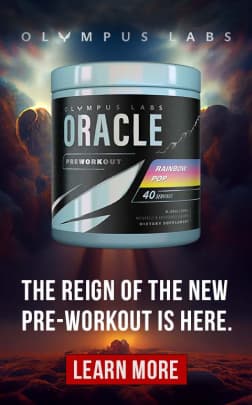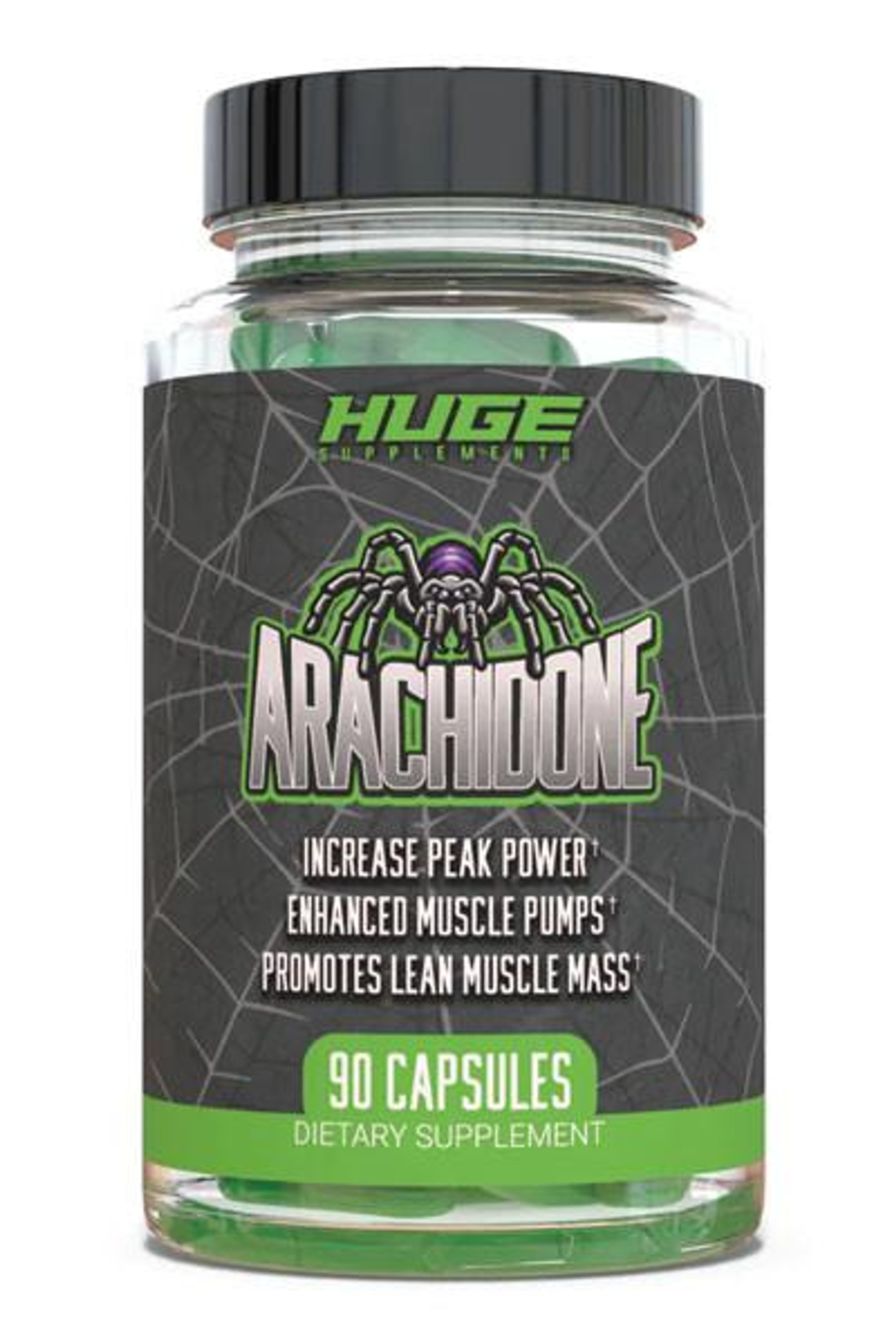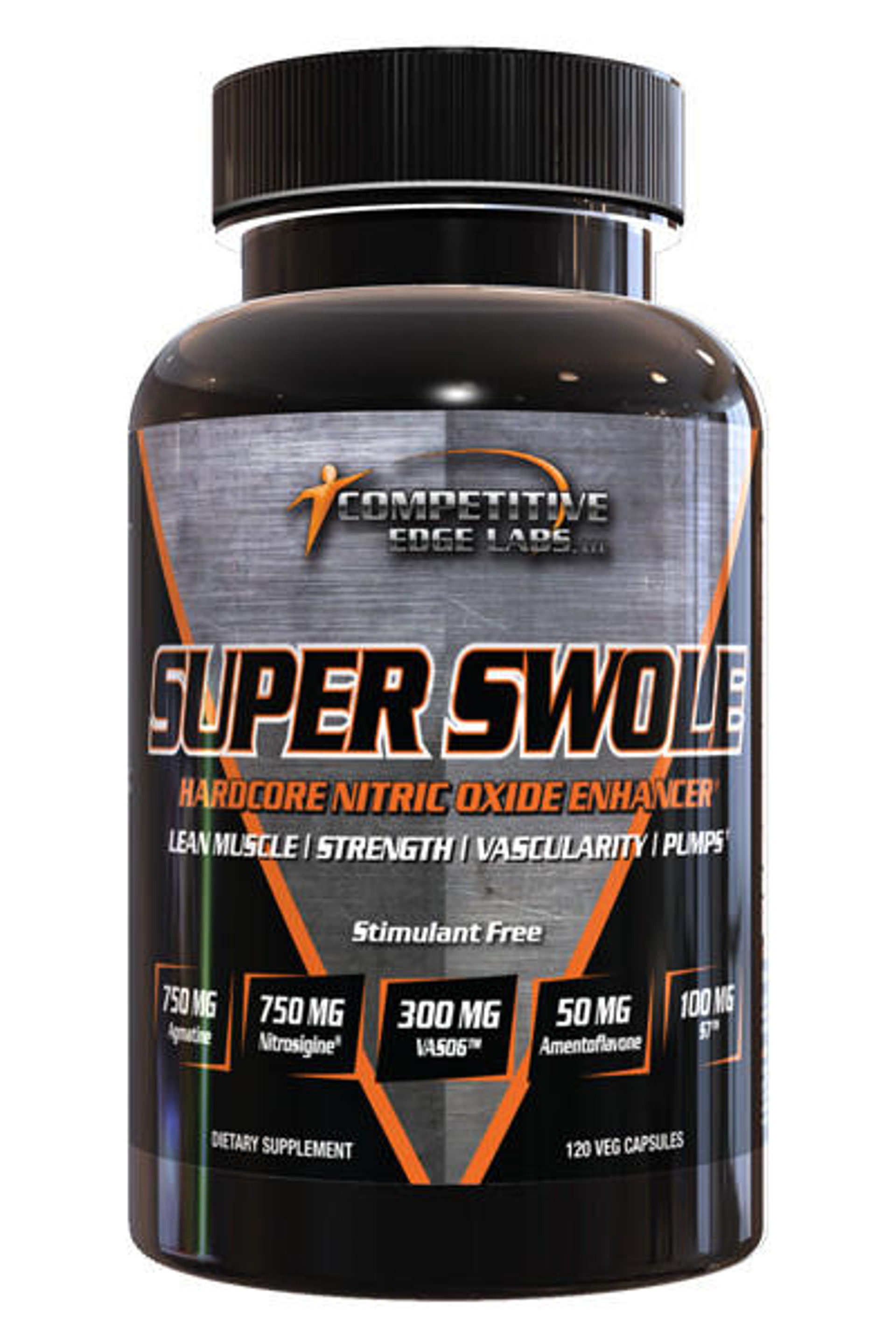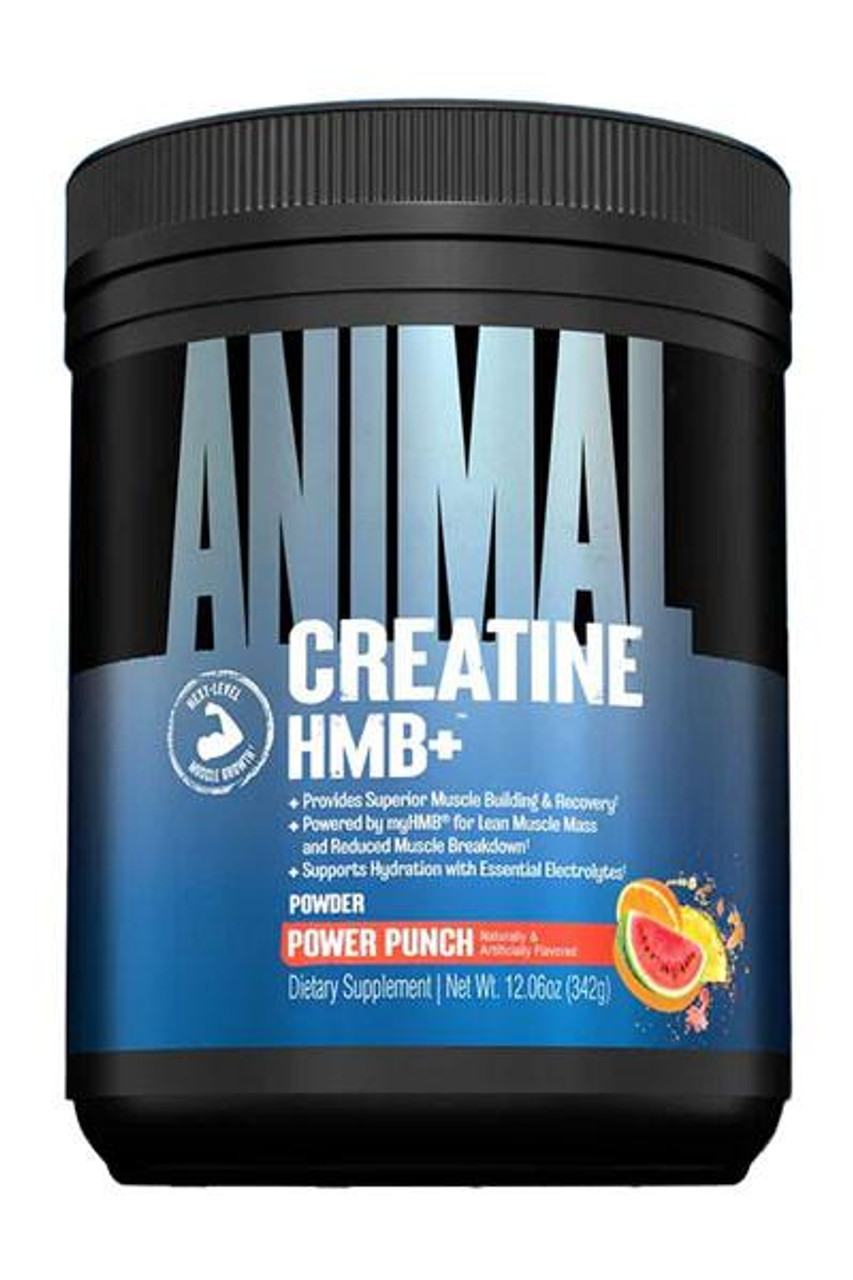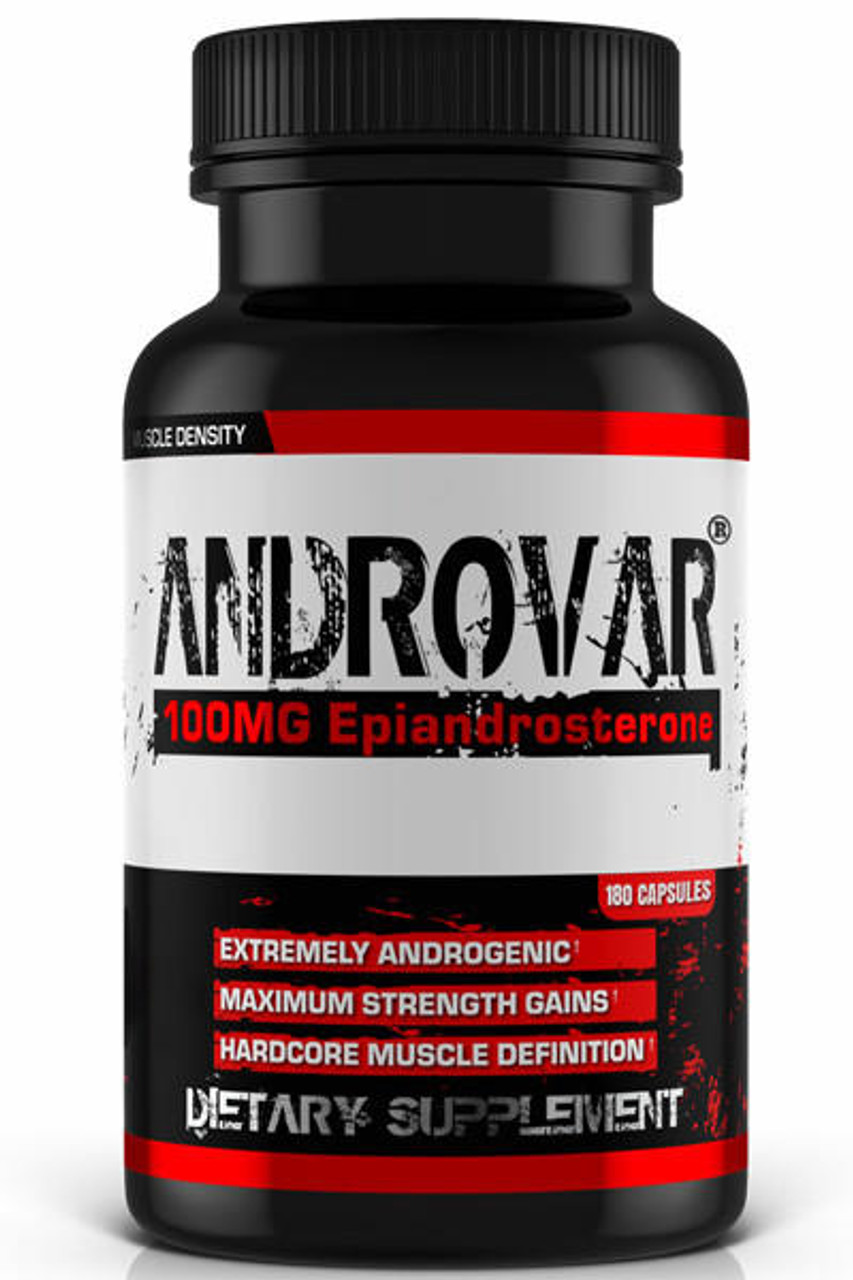How Many Reps and Sets Should I Do? Full Goal-Based Guide
Posted by Leonard Shemtob on Jul 23, 2025
Reps (repetitions) are how many times you do a movement, and sets are how many groups of reps you complete. The right number of reps and sets can help you build muscle, get stronger, or lose fat.
But the answer isn’t the same for everyone—it depends on your fitness level, goals, and the type of workout you’re doing. In this guide, we’ll break it down in simple terms and explain how to choose the best reps and sets for your goals.
[Related] How Long Should I Rest Between Sets? (Science-Backed Guide)
Short Summary
- Reps (repetitions) are the number of times you perform an exercise in one go.
- Sets are how many rounds of reps you complete in a workout.
- The right reps and sets depend on your fitness goal: muscle growth, strength, or fat loss.
- For muscle building, moderate reps (6-12) with multiple sets work best; for strength, fewer reps (1-5) with heavier weights are ideal.
- Higher reps (12-20) with lighter weights help improve endurance and aid fat loss.
- Beginners can start with 2–3 sets of 8–12 reps for most exercises.
- Boost your results: Anafuse may help enhance muscle growth, strength, and post-workout recovery, further improving your overall performance.
Firstly, What Are Reps and Sets?
- Reps (short for repetitions) are how many times you do a single movement. For example, if you lift a dumbbell up and down once, that’s one rep.
- Sets are groups of reps. So, if you do 10 reps of the dumbbell lift, then take a break, you have completed one set.
Example: If your workout says “3 sets of 12 squats,” it means you will do 12 squats, rest, then repeat that two more times.
How Many Reps and Sets Should I Do?
The number of reps and sets you should do depends mostly on your fitness goal. Here is a simple guide to help you choose the right amount:
- For building strength: Do fewer reps with heavier weights. Aim for about 4 to 6 reps per set, and do 3 to 5 sets of each exercise. This helps your muscles get stronger.
- For muscle growth (building size): Aim for 8 to 12 reps per set with moderate weights. Do about 3 to 4 sets. This rep range is popular for gaining muscle and is used by many bodybuilders.
- For muscular endurance or fat loss: Do more reps with lighter weights. Aim for 12 to 20 reps per set, and do 2 to 3 sets. This helps your muscles work longer and can support fat burning.
- For Beginners or General Fitness: Start with 2–3 sets of 8–12 reps using a weight that feels challenging but safe.
Also, when choosing how much weight to lift, pick a weight that feels challenging but still lets you complete your reps with good form. If you can easily do more reps than planned, increase the weight a little next time. As you get stronger, try to add more reps or sets gradually.
Below is the detailed breakdown!
1. Reps and Sets for Strength
Strength training focuses on lifting heavier weights for fewer repetitions. The commonly recommended range is 1–5 reps per set, with 3–6+ sets per exercise.
- Rep Range: 1-5 repetitions per set.
- Set Range: 3-6+ sets per exercise.
- Intensity/Load: This is crucial. You'll be lifting very heavy weights, usually 85% or more of your 1-rep max (1RM).
- Rest Periods: Long breaks are essential, typically 2-5 minutes between sets.
- Best for: Powerlifters, athletes, or anyone wanting raw strength
Why is this range effective for strength?
Strength gains in this rep range are primarily driven by neuromuscular adaptations. It's less about breaking down muscle fibers and more about training your brain and nervous system to efficiently recruit more muscle fibers simultaneously and send stronger signals to those muscles.
You become better at "turning on" your muscles with maximum force. Longer rest periods allow your central nervous system to fully recover and for your body's immediate energy system (ATP-PC system) to replenish, ensuring you can perform each subsequent heavy lift with maximal effort.
Moreover, lifting heavy also helps you thicken muscle fibers for dense strength and lets you lift maximal weights without metabolic burnout.
Other Relevant Details:
- Focus on compound exercises such as squats, deadlifts, bench presses, and rows.
- Proper form is essential due to the heavy loads.
- Progressive overload (gradually increasing weight) is key for continued progress.
2. Reps and Sets for Muscle Building (Hypertrophy)
If your primary objective is to increase the muscle size, your rep and set scheme will shift to emphasize muscle growth (known as hypertrophy).
- Rep Range: The sweet spot is generally 6-12 repetitions per set.
- Set Range: 3-5 sets per exercise. Beyond this, consider your total weekly volume per muscle group, which often falls in the 10-20 set range for optimal growth.
- Intensity/Load: Moderate to heavy weights, typically 65-85% of your 1-rep max. You should feel a significant burn and fatigue towards the end of each set.
- Rest Periods: Moderate breaks, usually 60-90 seconds between sets.
- Best for: Bodybuilders or those wanting a toned, muscular look
Why is this range effective for muscle building?
Muscle growth is stimulated through a combination of factors:
- Mechanical Tension: Lifting sufficiently heavy weights creates tension within the muscle fibers, which signals for growth.
- Muscle Damage: Performing reps to near-failure causes microscopic tears in muscle fibers. When these tears repair, the muscle rebuilds itself larger and stronger.
- Metabolic Stress: The "pump" you feel, and the accumulation of metabolic byproducts (like lactate) during moderate rep sets, leads to cellular swelling. This stressful environment is also a powerful signal for muscle growth.
This combination within the 6-12 rep range hits all these critical triggers effectively. The moderate rest periods allow enough recovery to maintain intensity without fully dissipating the metabolic stress.
Relevant Details:
- Variety of Exercises: Incorporate both compound (multi-joint) and isolation (single-joint) exercises to thoroughly work all parts of a muscle.
- Progress involves gradually increasing either weight, reps, or sets over time.
- Time Under Tension: Focus on controlling the weight through both the lifting and lowering phases of the movement to maximize the time your muscles are under tension.
- Training volume (total reps x sets x weight) is a significant driver of hypertrophy; tracking your workouts helps.
- Nutrition and Recovery: Ample protein intake and sufficient sleep are critical for muscle repair and growth, as the actual growth happens outside the gym.
3. Reps and Sets for Muscle Endurance
Muscular endurance training is all about improving your muscles' ability to perform repeated contractions or sustain a contraction for an extended period without fatiguing quickly. This is crucial for activities that require sustained effort, like long-distance running, cycling, or performing many repetitions of a bodyweight exercise.
- Rep Range: High, typically 15-20+ repetitions per set.
- Set Range: Generally 2-4 sets per exercise.
- Intensity/Load: Light to moderate weights, usually less than 50-65% of your 1-rep max.
- Rest Periods: Short, often 30-60 seconds between sets.
Why is this range effective for endurance?
This training style primarily targets your muscles' aerobic capacity and fatigue resistance. It improves the efficiency of your energy systems by increasing the number and size of mitochondria (the "powerhouses" of your cells) and enhancing capillary density, which means better oxygen and nutrient delivery to your working muscles.
By consistently pushing your muscles to work for longer periods under mild stress with limited rest, you train them to clear metabolic byproducts more efficiently and delay fatigue. It also helps improve muscular stamina, especially in smaller stabilizing muscles often overlooked in heavy lifting.
Relevant Details:
- High Volume, Lower Intensity: The overall workload is high due to the number of reps, but the individual effort per rep is lower than strength or hypertrophy training.
- Circuit Training: This rep and set scheme is often seen in circuit training, where you move quickly from one exercise to the next with minimal rest.
- Functional Fitness: Excellent for improving your capacity for daily tasks and sports that require sustained effort.
- Focus on both compound (e.g., lunges, push-ups) and bodyweight exercises.
Best For:
- Athletes (runners, swimmers, fighters)
- Functional fitness (e.g., hiking, manual labor)
4. Reps and Sets for General Fitness
For many people, the goal isn't extreme strength, massive muscles, or peak endurance in a specific sport, but rather a well-rounded level of fitness that contributes to overall health, functional ability, and improved body composition. This approach blends elements from the other training styles.
- Rep Range: A versatile mid-range, typically 8-15 repetitions per set.
- Set Range: Often 2-4 sets per exercise.
- Intensity/Load: Moderate weights, usually 60-75% of your 1-rep max.
- Rest Periods: Moderate, around 60-90 seconds between sets.
Why is this range effective for general fitness?
This balanced approach provides a good stimulus for a variety of adaptations:
- Muscle Maintenance/Growth: It's within the range that still promotes muscle protein synthesis, helping you build or maintain lean muscle mass.
- Strength Gains: You'll still get stronger, especially as a beginner or intermediate lifter, by consistently challenging your muscles.
- Build Muscular Endurance: The higher end of this rep range (12-15 reps) will also contribute to improved local muscular endurance.
- Bone Density: Weight-bearing exercise, regardless of specific rep ranges, is beneficial for bone health.
Relevant Details:
- This range is highly adaptable and can be applied to a wide variety of exercises, from free weights to machines and bodyweight.
- Adjust weight as needed—aim for a load that is challenging but allows you to finish each set with good form.
- Prioritize consistency and gradual progression to boost overall fitness.
- Learn the correct form before increasing weight.
Best For:
- Casual gym-goers
- Maintenance phases
- Full-body workouts
5. Reps and Sets for Muscle Power
Muscle power training is about moving weight explosively. This type of training is especially helpful for athletes and anyone wanting to improve how quickly they can generate force.
- Rep Range: Very low, typically 1-5 repetitions per set.
- Set Range: Moderate to high, often 3-6 sets per exercise.
- Intensity/Load: This can vary. It's not necessarily about maximum weight, but about moving the chosen weight with maximum speed and intent. Loads can range from 30-70% of your 1-rep max, depending on the exercise, but the speed of execution is paramount.
- Rest Periods: Long breaks are crucial, typically 2-5 minutes between sets.
Why is this range effective for muscular power?
Power training focuses heavily on neuromuscular efficiency and rate of force development (RFD). The goal is to train your nervous system to activate muscle fibers (especially fast-twitch fibers) as rapidly and synchronously as possible. Each rep is performed with an all-out burst of speed.
The long rest periods ensure that your central nervous system and immediate energy systems (ATP-PC system) are fully recovered for each subsequent set, allowing you to maintain peak explosiveness. You can't train for power if you're fatigued.
Relevant Details:
-
Explosive Execution: The speed at which you perform the lift is more important than the weight itself (within the appropriate range).
-
Exercise Selection: Power training often involves:
-
Olympic Lifts: Cleans, jerks, snatches.
-
Plyometrics: Jumps, bounds, medicine ball throws.
-
Explosive Variations: Box squats, jump squats, clap push-ups.
-
-
Technique is Critical: Due to the explosive nature, proper form is absolutely essential to prevent injury.
-
Quality over Quantity: A few perfect, explosive reps are far more beneficial than many sloppy, slow reps.
6. Reps & Sets for Beginners
If you're just starting out, your focus should be on learning proper form, building consistency, and avoiding injury. You don’t need heavy weights or complex routines in the beginning.
Optimal Range:
- Reps: 8–12
- Sets: 2–3 per exercise
- Weight: Light-to-moderate (focus on perfect form)
- Rest: 1–2 minutes
Why It Works:
- Skill Development: Builds movement patterns without fatigue.
- Adaptation Phase: Prepares tendons/joints for heavier loads.
- Sustainable Progress: Reduces injury risk while building habits.
Pro Tip: Start with 2 full-body workouts/week, mastering basics (squats, push-ups, rows) before advancing.
7. Reps and Sets for Weight Loss
While nutrition and cardio play significant roles in weight loss, weight training is incredibly effective too. It helps you burn calories during your workout, and more importantly, it helps you preserve and even build muscle mass, which is metabolically active tissue that burns more calories at rest.
Optimal Range:
- Reps: 8–15
- Sets: 3–4
- Weight: Moderate (challenging but controlled)
- Rest: 30–60 seconds
Why is this approach effective for weight loss?
Weight training helps with weight loss in a few key ways. By lifting in these rep ranges, you create a metabolic demand that burns calories both during and after your workout (the "afterburn effect").
Crucially, building or even just maintaining muscle mass is vital because muscle tissue boosts your resting metabolism, meaning you burn more calories even when you're not exercising. This combination makes strength training a powerful tool in your weight loss journey, especially when paired with a calorie-controlled diet and some cardiovascular activity.
Pro Tips:
- Pair with circuits or supersets (e.g., squats → push-ups → rows, no rest between exercises).
- Also, weight losing weight is more about a calorie-controlled diet.
Key Factors Affecting Reps and Sets
- Fitness Goal: Whether you want to build strength, muscle, endurance, or lose weight matters most. Each goal has a different ideal range for reps and sets.
- Experience Level: Beginners and advanced lifters need different routines. Newcomers benefit from moderate reps and lower sets, while experienced individuals might use higher sets with specific rep ranges.
- Training Frequency: If you train a muscle more often during the week, you may need fewer sets per session. If you train it once a week, more sets might be needed.
- Type of Exercise: Compound movements (like squats or bench press) can handle more sets with lower reps, while isolation exercises (like bicep curls) often use lighter weights and higher reps.
- Amount of Weight: The heavier the weight, the fewer reps you can do with good form. Lighter weights allow for higher reps.
- Rest Periods: Short rest (30–60 seconds) favors endurance; longer rest (2–5 minutes) is better for strength and power.
- Fatigue and Recovery: Your body’s energy and recovery needs affect how many sets and reps you can perform effectively. Overtraining or lack of rest can limit progress.
- Progressive Overload: Gradually increasing reps, sets, or weight over time is necessary to keep making gains.
How to Create Your Own Workout Routine
Now that you understand the different rep and set ranges and why they matter, let's put it all together. Creating your own workout doesn't have to be complicated. Here’s a simple step-by-step guide:
Know Your Goal: First, decide what you want: build muscle, lose fat, gain strength, or just stay active. Your goal will guide your reps, sets, and exercise choices.
Pick the Right Exercises:
- For full-body workouts, include squats, push-ups, rows, and planks.
- For muscle gain or strength, focus on compound lifts like squats, bench press, and deadlifts.
- For fat loss, add cardio moves like jump rope, burpees, or kettlebell swings.
Set Your Reps and Sets:
Then, decide on the number of sets you'll perform for each exercise. Use the guide from earlier:
- Strength: 3–6 reps, 3–5 sets
- Muscle building: 8–12 reps, 3–4 sets
- Fat loss: 12–20+ reps, 2–4 sets
- Beginners: 8–12 reps, 2–3 sets
Plan Rest Time:
- 30–60 sec for fat loss or endurance
- 60–90 sec for muscle gain
- 2–3 min for strength
Train 3–5 Days a Week: Common approaches include full-body workouts 2-3 times a week, or "splits" where you train different muscles on different days (e.g., upper body/lower body, or push/pull/legs). Choose what fits your schedule best.
Start Simple and Progress: Begin with easy exercises and manageable weight or intensity. As you get stronger, increase the weight, reps, or sets gradually to keep improving.
Keep Track: Write down your workouts, including exercises, sets, reps, and weights. Tracking helps you see progress and adjust your plan over time.
Best Supplements to Improve Your Workout
1. Anafuse by Vital Alchemy
Anafuse is a natural anabolic bulking stack designed to enhance muscle growth without suppressing natural hormone production. It works by inhibiting myostatin, a protein that limits muscle growth, thereby unlocking genetic potential for gains.
The formula improves muscle endurance, accelerates recovery, reduces soreness, and promotes lean mass without adding water weight. It also provides pronounced muscle pumps and helps reduce body fat. Anafuse supports sustained strength and muscle hardness through a multi-compound, all-natural formula.
Key Benefits:
- Supports lean mass gains
- Inhibits myostatin to enhance genetic muscle growth
- Improves endurance and strength
- Accelerates muscle recovery and reduces soreness
- Promotes muscle hardness and pumps
- Helps reduce body fat
Key Ingredients:
- Epicatechin
- Ajuga Turkestanica
- HICA
- Eriobotrya Japonica
- Vitamin D3
- Quercetin
Customer Reviews
![]() GREAT PRODUCT
GREAT PRODUCT
“Increased strength, fat loss and *********** gain. All in one. Very good product that I would recommend”
-STEPHAN
![]() Stuff works great
Stuff works great
“I have noticed being much leaner and just look toned since taking it..”
-Gary B.
![]() Great results
Great results
“This product produces excellent results, that you’ll quickly notice within weeks. My focus and strength are doubled while I’m on this product!”
-Micah H.
2. Cordarine by CEL
Cordarine is often used for enhancing endurance and fat metabolism during workouts. It primarily acts as a selective androgen receptor modulator (SARM) aimed at promoting fat loss while preserving lean muscle mass. This supplement helps increase aerobic capacity and energy levels, making it a favored choice for athletes and those performing endurance training.
Key Benefits:
- Enhances endurance and aerobic capacity
- Supports fat loss while preserving muscle
- Boost Aerobic capacity (VO2 max)
- Improves energy and workout stamina
- May support cardiovascular health
Key Ingredients:
- Cordy-Plex™
- Senactiv®
- SalidroPure™ Salidroside
- MitoBurn® L-BAIBA
- CaloriBurn GP®
- Cocoabuterol®
- gbbBURN™ GBB
- AstraGin®
- BioPerine®
3. Superhuman Elite by Alpha Lion
Superhuman Elite is a pre-workout blend created to boost energy, focus, and workout performance. It combines stimulants and nootropics to enhance mental clarity and physical drive during training sessions.
The formula is designed to increase strength output and muscular endurance, helping users push harder with less fatigue. Additionally, it promotes enhanced blood flow for better nutrient delivery and muscle pumps.
Key Benefits:
- Increases energy and focus
- Enhances strength and endurance
- Supports mental clarity during workouts
- Promotes muscle pumps and improved blood flow
- Includes nootropic and performance blends
Key Ingredients:
- L-Citrulline
- Beta Alanine
- Malic Acid
- L-Taurine
4. Pepti-Bolic by SNS
Pepti-Bolic is a peptide-based supplement intended to support muscle growth and recovery. It contains a blend of peptides that may enhance anabolic signaling and muscle protein synthesis.
This formula aims to boost nitrogen retention and reduce catabolism, allowing for faster recovery and greater muscle gains.
Key Benefits:
- Stimulates muscle growth through peptides
- Enhances protein synthesis and nitrogen retention
- Speeds up muscle recovery
- Reduces muscle breakdown
Key Ingredients
- PeptiStrong™
- DL185™ (Dileucine)
Customer Reviews
![]() Loving it so far!
Loving it so far!
“So far so good! Waiting to try it out for a month to see results but feeling stronger and looking leaner: delivery was fast and exactly what I expected. Great communication”
-Agape M.
5. Arachidone by Huge Supplements
Arachidone refers to Arachidonic Acid (AA), an omega-6 fatty acid. In supplement form, it is used to potentially enhance muscle growth and recovery.
AA plays a role in cellular signaling pathways involved in muscle adaptation and localized inflammation. Users often take it to support the anabolic response to resistance training.
Key Benefits:
- Supports joint health and reduces inflammation
- Enhances muscle signaling and growth
- Promotes faster recovery
- Increases strength and power
Key Ingredient:
-
Arachidonic Acid
6. Super Swole by CEL
Super Swole is a stimulant-free muscle pump and nitric oxide booster supplement designed to enhance vascularity, muscle fullness, and endurance during workouts. It contains scientifically backed ingredients such as Agmatine Sulfate, Amentoflavone, and the S7 plant-based blend that increase nitric oxide production and improve blood flow.
This formula supports nutrient absorption and promotes long-lasting pumps, strength, and lean muscle gains. Additionally, it may improve mood and focus without jitters.
Key Benefits:
- Increases nitric oxide and blood flow for intense pumps
- Enhances muscle fullness and vascularity
- Supports endurance and strength
- Improves nutrient absorption
- Stimulant-free with mood-enhancing effects
Key Ingredients
- Agmatine Sulfate
- Amentoflavone
- PegaPump™
- Nitrosigine
- VitaSport® Cherry
- KannaEASE
- S7®
- AstraGin®
- VASO6™
Customer Reviews
![]() Big Pumps
Big Pumps
“Big Pumps, feeling like my arms are huge during and after my workouts - super veiny too! 5 Stars for sure.”
-Lavi
7. Huge EAA by Huge Supplements
Huge EAA is a supplement providing essential amino acids (EAAs) required to support muscle protein synthesis and recovery. Unlike BCAAs alone, EAAs cover all amino acids the body cannot produce, making this supplement effective for muscle repair, growth, and reducing muscle breakdown. It helps optimize performance, decrease muscle soreness, and promote lean muscle retention during workouts and dieting.
Key Benefits:
- Supplies all essential amino acids for muscle synthesis
- Supports faster recovery and reduced soreness
- Prevents muscle breakdown
- Enhances lean muscle maintenance
Key Ingredients:
- L-Leucine
- L-Isoleucine
- L-Valine
- L-Lysine
- L-Phenylalanine
- L-Threonine
- L-Histidine HCl
- L-Tryptophan
- L-Methionine
8. Animal Creatine HMB+ by Universal Nutrition
Animal Creatine HMB+ is a muscle growth and recovery supplement combining creatine monohydrate with HMB (beta-hydroxy-beta-methylbutyrate). Creatine increases cellular energy production, enhancing strength and power during high-intensity exercise.
HMB reduces muscle protein breakdown and promotes repair, supporting lean mass retention and faster recovery. The blend aims to maximize muscle gains, improve workout performance, and reduce fatigue, particularly useful for strength athletes and bodybuilders.
Key Benefits:
- Boosts strength and power via creatine
- Decreases muscle breakdown with HMB
- Enhances muscle recovery and repair
- Supports lean muscle growth and retention
Key Ingredients:
- Vitamin D (as cholecalciferol)
- Calcium (from myHMB calcium β-Hydroxy β-Methylbutyrate Monohydrate)
- Phosphorus - 20mg
- Magnesium - 13mg
- Sodium - 110mg
- Potassium - 35mg
9. Sergeant Steel by Assault Labs
Sergeant Steel is marketed as a military-grade testosterone booster designed to support male hormone levels. It features a blend of 16 ingredients, including D-Aspartic Acid, KSM-66 Ashwagandha, and Mucuna Pruriens, all chosen to stimulate natural testosterone production.
This supplement aims to help increase strength, endurance, and muscle mass while also improving libido and overall well-being by reducing estrogen and cortisol levels.
Key benefits:
- Helps boost testosterone levels
- Supports increased muscle mass and strength.
- Helps improve overall mood and libido
- Aids in recovery and reduces estrogen/cortisol
Key Ingredients
- D-Aspartic Acid
- KSM-66® Ashwagandha Root Extract
- Mucuna Pruriens
- Nettle Extract
- Fenugreek
- Shilajit
- LJ100
- Dehydroabietic Acid (DHAA)
- Tribulus Extract
- Maca Extract
- Boron
Customer Reviews
![]() **** yeah
**** yeah
“It works for me! I noticed after a few days! I'll be ordering more!”
-Timothy W.
![]() Strong Test Booster!
Strong Test Booster!
“Sergeant Steel is pretty strong! I have used Apex Male in the past and Sergeant Steel seems to out perform from a motivation and performance standpoint.”
-Tracy G.
![]() Sergeant steel
Sergeant steel
"Great sup best test booster available always delivers and good price put it with anafuse and wow ?"
-Steve
10. Androvar by Hard Rock Supplements
Androvar is a DHT-based prohormone designed for lean muscle gains, strength, and a harder physique. It supports increased aggression in training and may aid fat loss during cutting cycles. Due to its potency, on-cycle support and post-cycle therapy are typically recommended.
Note: This product is intended only for experienced bodybuilders or weightlifters with at least 2+ years of consistent training, and a solid understanding of nutrition, proper training, and supplement cycles.
On-cycle support and post-cycle therapy (PCT) are required. For convenience, check out the Shred and Sculpt Stack, which includes all the necessary support supplements.
Key Benefits:
- Promotes lean muscle growth
- Supports strength and hardness
- DHT-based for dry gains
- Helps improve strength and training performance
- May assist with fat loss
- Supports improved vascularity
- Aids workout intensity and focus
- Promotes better muscle pumps
- Supports protein synthesis and recovery
Key Ingredients
Customer Reviews
![]() Works great
Works great
“I've had no negative side effects (other than being a bit more ragey that usual), weight loss, muscle gain, and strength gain. It's a win.”
-Kevin D.
![]() Excellent high end energy
Excellent high end energy
“This makes testosterone much more usable and stronger. It improves energy, motivation, vascularity and mood.”
-gem c.
![]() Awesome Product
Awesome Product
“I been using product for years best on market”
-Sarge
Final Thoughts
You now have a clear roadmap for reps and sets. Your fitness goals directly guide your workout approach. Lifting for strength focuses on heavy, low reps.
Muscle growth demands moderate reps and sets. Endurance training uses higher reps with less rest. General fitness benefits from a balanced mix. Each method targets specific physical changes.
Applying these principles builds an effective, personalized routine. Remember, consistency is key. Listen to your body and adjust as needed. Progressive overload ensures continued progress.
Written and Sponsored by Leonard Shemtob
Leonard Shemtob is President of Strong Supplements and a published author. Leonard has been in the supplement space for over 20 years, specializing in fitness supplements and nutrition. Leonard appears on many podcasts, written over 100 articles about supplements and has studied nutrition, supplementation and bodybuilding.
Leonard's articles have been published in many top publications around the web. Leonard enjoys weight training, playing basketball and yoga, and also enjoys hiking. In his free time he studies and works on improving himself. For more detailed information, visit his official blog.
FAQs: How Many Reps and Sets Should I Do

- Schoenfeld, B. J., Grgic, J., Ogborn, D., & Krieger, J. W. (2021). Loading recommendations for muscle strength, hypertrophy, and local endurance: A re-examination of the repetition continuum. Sports, 9(3), 32
- Mao, J., Wang, T., Wang, Y., & Kuan, G. (2023). Effect of resistance training programs differing in set structure on muscular hypertrophy and performance in untrained young men. Frontiers in Physiology, 14, 1301535.
- American College of Sports Medicine. (2009). Progression models in resistance training for healthy adults. Medicine & Science in Sports & Exercise, 41(3), 687–708.
- Ratamess, N. A., Alvar, B. A., Evetoch, T. K., Housh, T. J., Kibler, W. B., Kraemer, W. J., & Triplett, N. T. (2009). Progression models in resistance training for healthy adults. Medicine & Science in Sports & Exercise, 41(3), 687–708.
- Krieger, J. W. (2010). Single vs. multiple sets of resistance exercise for muscle hypertrophy: A meta-analysis. Journal of Strength and Conditioning Research, 24(4), 1150–1159.
- Campos, G. E., Luecke, T. J., Wendeln, H. K., Toma, K., Hagerman, F. C., Murray, T. F., ... & Staron, R. S. (2002). Muscular adaptations in response to three different resistance-training regimens: Specificity of repetition maximum training zones. European Journal of Applied Physiology, 88(1-2), 50–60.
- Kraemer, W. J., & Ratamess, N. A. (2004). Fundamentals of resistance training: Progression and exercise prescription. Medicine & Science in Sports and Exercise, 36(4), 674–688.
- Baechle, T. R., & Earle, R. W. (2008). Essentials of strength training and conditioning (3rd ed.). Human Kinetics.
